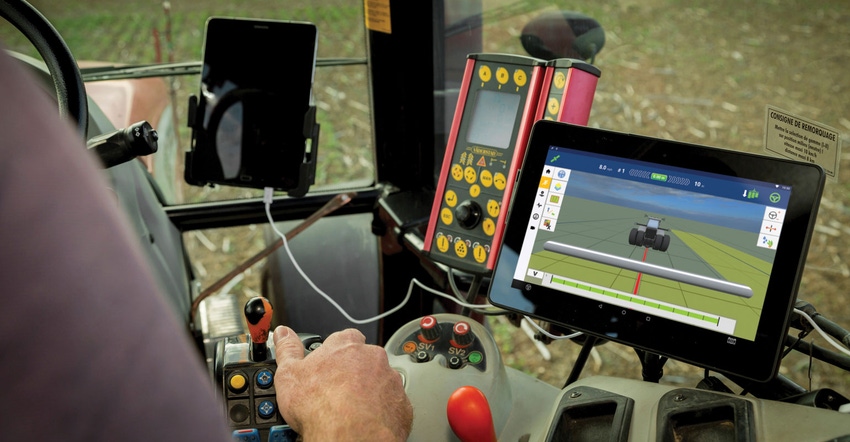March 12, 2021

Ever consider what you might save if you invested in sub-inch accuracy guidance tools on the farm? GPS correction services have been available for more than two decades, but what does high-precision accuracy really save your operation?
Trimble was asking the same question and for a good reason. "Believe it or not, we've found a lot of our customers don't have hard data on the changes they make," says Michael Bruno, channel program manager, Trimble. "They might know they need higher accuracy; they see that their neighbor is using RTK. But we've found a significant amount of our customer base is not directly measuring it."
Of course, Trimble has an interest in showing how super precise accuracy can add up to savings on your farm. The company's CenterPoint RTX system can provide sub-inch accuracy using satellite or cellular access. But what can that mean?
Bruno acknowledges that customers may think they know there can be some savings by investing in higher precision, but putting an accurate number to the savings was important. The company created an online tool designed to provide that insight.
They call it the CenterPoint RTX Correction Services Input Savings Calculator. Essentially, you enter some key information, and it can calculate the savings of going from no correction to sub-inch correction. It can even show the difference from less precise correction services such as WAAS, and moving to centimeter-level accuracy.
"I think [customers] know they'll see a change in their input costs," Bruno says. "They'll spend less on seed, fertilizer and see a higher yield. But we're trying to bring that savings to the forefront for them."
Unnoticed savings
Bruno shares that the online tool is designed to put a number on a vague concept for many. He likens it to the move to a newer car or pickup with higher fuel economy.
"If you thought about it, do you consider the savings for that higher-mpg vehicle?" he asks. "Do you notice your gas bill going down at the pump? Do you see that you're filling up every 10 days now instead of every seven?"
That's a hidden savings that doesn't always get measured. The same is true for sub-inch accuracy, which many farmers may be using but don't always know the savings. At a time when farmers are looking at all costs upfront, knowing potential — or real — savings makes a difference.
"We're trying to boil it down with this tool," Bruno says.
In the online tool, you pick your units (acres), currency, farm size and price of an input per acre — such as fungicide. You pick the implement width, and you enter the average pass-to-pass overlap — from 1 inch to 3 feet.
"I think a good operator can get that pass-to-pass accuracy down as low as 6 inches, but with a 100-foot sprayer, they're not usually that accurate all day," Bruno observes.
You can enter your pass-to-pass accuracy estimate, then ask the tool to calculate savings.
Here's an example. For 500 acres of fungicide at $25 per acre, if your pass-to-pass overlap is 1 foot with a 100-foot boom sprayer, the move to sub-inch accuracy, according to the tool, saves you just over $104 for that application. That's 21 cents per acre.
If your pass-to-pass accuracy is wider, say 2 feet, you save just over $219 or 44 cents per acre. That's just for one application.
"This is a pretty cool way to show the return on investment for the technology, and the value of a targeted application," Bruno says.
Run the numbers yourself at agriculture.trimble.com.
About the Author(s)
You May Also Like






